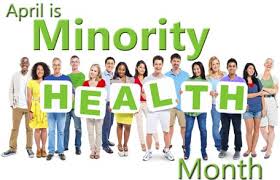Every April, the sponsors of National Minority Health Month call attention to the prevalent health conditions of minorities. But the month is also about spreading information to improve the health of these communities.
This year’s theme for Minority Health Month is “Active and Healthy,” and brings a focus on how an active lifestyle can reap true rewards in overall physical and mental health.
As a minority nurse, the information is personal. You can take a look at your own lifestyle and any inherited or existing risk factors you have in your own life to make changes. But you can also use that information and your own experiences to help your patients who might be struggling to have a healthier life.
Luckily, helpful information is plentiful and easy to find. You can work with your patients to find a plan that is achievable for them. Making small adjustments and changes that they are willing to implement is the first step.
Through the Centers for Disease Control and Prevention’s Office of Minority Health and Health Equity (OMHHE) or the Department of Health and Human Services’s Office of Minority Health, minority health disparities become clear. Minority populations disproportionately suffer from high blood pressure, diabetes, heart disease, and higher rates of obesity. Because of cultural taboos or attitudes in some minority communities and combined with a lack of nearby high-quality care, mental health struggles go untreated. All of these things can lead to a decline in health and contribute to lifelong, serious diseases.
An active lifestyle impacts both physical and mental health in all populations. After treating many patients, however, any nurse knows you can’t just tell someone to start jogging and enjoy the benefits. You have to fine-tune your approach, taking into account their existing health conditions, so they will be motivated and can do what you are suggesting. Remind them that any activity is good. A sustained and consistent active lifestyle is optimal, but even small changes can make a big difference.
Here are some ways to encourage your patients (and yourself) to get active:
- Walk whenever you can
- Take the stairs – if you can’t do three flights, just do one
- Stretch when watching TV
- Take a couple of laps around the mall when you go
- Think of all the ways you move – cleaning, gardening, walking the dog – increase it
- Walk in place when talking on the phone
- Meet a friend for a walk instead of meeting for a coffee
- Do activity that is fun—dancing, swimming, hiking, yoga
- Think of “active” as just moving and move more whenever you can
Getting active feels good (maybe not at first!) and can prevent or help many health conditions. Encouraging your patients to get moving and finding a plan they can manage is a great start.
- Is the FNP Program Right for You? - April 24, 2024
- WOC Nurses Week Highlights Specialty - April 16, 2024
- Honoring Radiology Nurses Day on April 12 - April 12, 2024



